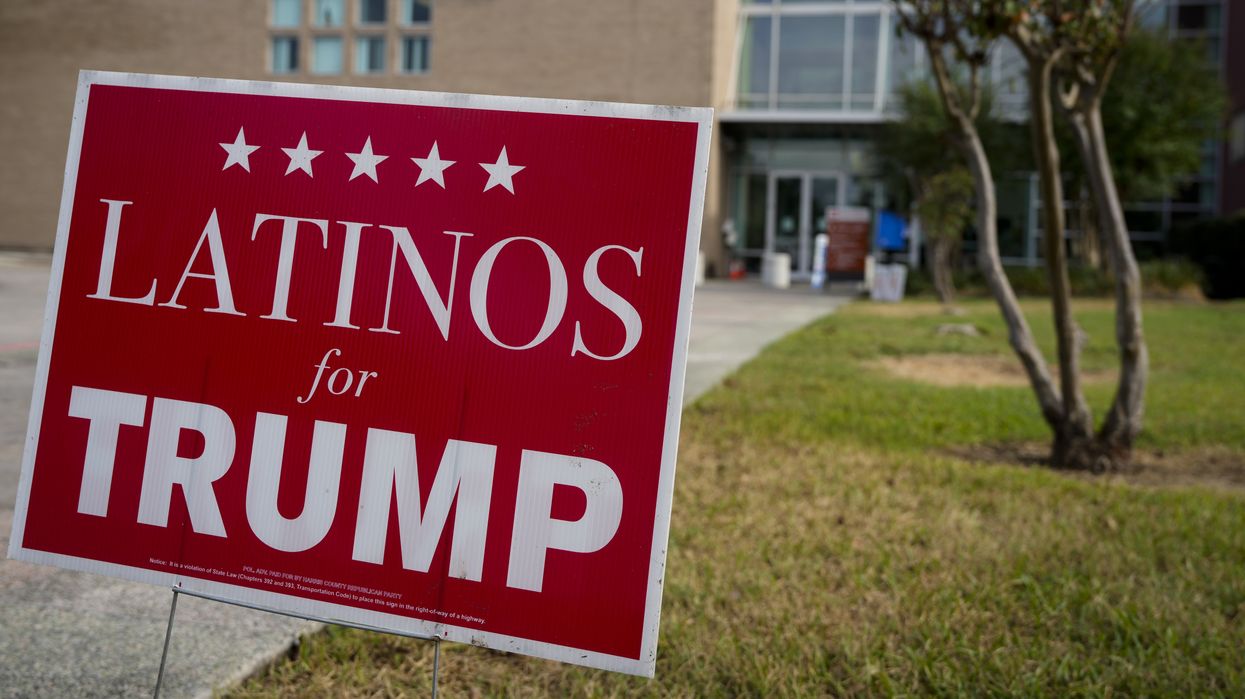Balta is director of solutions journalism and DEI initiatives for The Fulcrum and a board member of the Bridge Alliance Education Fund, the parent organization of The Fulcrum. He is publisher of the Latino News Network and a trainer with the Solutions Journalism Network.
Donald Trump has been elected the 47th president of the United States, thanks in part to his major improvements in reaching the Latino electorate, especially Latino men.
Preliminary exit polls from CNN indicate that while Vice President Kamala Harris won a slim majority of votes with Latinos (53 percent), over half (54 percent) of Latino men supported Trump. In comparison, 45 percent backed Harris. Four years ago, the figures were nearly reversed. In 2020, 59 percent of Latino men supported Joe Biden, while 36 percent supported Trump, according to exit polls from that election.
An estimated 36.2 million Latino people were eligible to vote this year, up from 32.3 million in 2020, according to the Pew Research Center. This represents 50 percent of the total growth in eligible voters during this time.
Latinos comprise around 30 percent of the electorate in two key Southwest battlegrounds, Arizona and Nevada, where Trump is leading Harris in the neck-and-neck race. Trump lost both states to Biden in 2020.
Polling released this week by UnidosUS and partner organizations reveals that Latino support for Harris was highest in Pennsylvania (72 percent to 26 percent), a key battleground state where Trump secured 19 electoral votes on election night. The poll also revealed that Latino voters were driven to the polls by their concerns over pocketbook issues, including the cost of living, jobs and the economy, housing affordability, and health care costs. An AP VoteCast poll found respondents said Trump is stronger on the economy.
Pennsylvania voter Regino Cruz told NBC News that he voted for Trump because he believed the former president could improve the economy. “For me, it’s work. It’s the economy. It’s groceries,” said Cruz.
"Republicans have consistently beat Democrats on connecting with voters on the economy," said Clarissa Martinez De Castro, vice president of UnidosUS. "This was a referendum on the economy, and that has consistently been the number one, two and three issues for Hispanic voters."
Demographic Diversity And Regional Variations
Latino voters are not a monolithic group; they represent a diverse array of nationalities, cultures and political beliefs. This diversity means that voting patterns vary significantly based on geographic location, age and socioeconomic status.
In Florida, for instance, where Latinos voted for the former president over Harris 53 percent to 44 percent, many Cuban American voters support Trump due to his strong stance against the socialist government in Cuba, which resonates with their personal histories and political values.
"There are more conservative Hispanics now than there were in 2020," said Eduardo Gamarra, a professor of politics at FIU and director of the Latino Public Opinion Forum, in an interview with CBS. "Do not use the term 'progressive' in Florida. Fidel Castro called himself a progressive, Evo Morales in Bolivia calls himself a progressive, and Nicolas Maduro calls himself a progressive," he noted.
In Texas, a combination of cultural conservatism and economic concerns led some Latino voters to favor Trump’s policies. In the traditionally Democratic strongholds along the border, Trump managed a near sweep by winning 14 out of the 18 counties within 20 miles of the border. He carried all four counties in the Rio Grande Valley, including Starr County, with more than 57% of the vote. It's the first time the GOP has won there since 1896.
BSP Research’s polling of 1,900 Latino registered voters across eight battleground states highlights the complexity of this rapidly growing demographic, challenging the notion of a binary political alignment.
When asked which candidate they believe will protect democracy and uphold the Constitution, Mexican Americans favored Harris by a 37-point margin, while Cuban-Americans preferred Trump by an 8-point margin.
Regarding the issue of abortion, three-fourths of Mexican and Puerto Rican Americans agreed it is wrong to make abortion illegal and remove choice, regardless of personal beliefs.
Similarly, over two-thirds of Cuban Americans expressed agreement with this perspective.
On immigration, 70 percent of Puerto Ricans, who are U.S. citizens, indicated they would be more likely to vote for a candidate who supports a path to citizenship for undocumented immigrants in the United States. Among Cuban Americans, 71 percent expressed support for a candidate with a similar stance.
Understanding Latino Conservative Values
Among Latinos, there exists a segment that identifies with conservative values, which can be influenced by a combination of cultural, religious, economic and social factors.
A strong emphasis on family is a hallmark of Latino culture, often influencing conservative values. Many Latino conservatives prioritize traditional family structures and uphold the importance of family unity. This focus on family extends to broader community ties, where there is often a commitment to supporting local initiatives and helping neighbors. These values align with conservative principles that emphasize the significance of the family as the foundational unit of society.
Religion plays a vital role in the lives of many Latinos, particularly among those who identify as conservative. A significant portion of the Latino population is Roman Catholic, but there is also a growing number of evangelical Christians. Faith often shapes moral and ethical perspectives, leading to conservative views on marriage, life, and social responsibilities. This connection to faith can foster a sense of community and shared values among Latino conservatives.
“Latino churches, in order to gain a sense of power and acceptance, began to align with (white conservative) evangelical churches in the U.S.,” observed Elizabeth Conde-Frazier, a scholar of the Association of Hispanic Theological Association.
Education is a critical issue for many Latino conservatives, who often prioritize access to quality educational opportunities for their children. Many support school choice initiatives, including charter schools and voucher programs, which can provide better educational options for families. This focus on education aligns with conservative values that prioritize parental involvement and decision-making in children’s education.
Latino conservative values reflect cultural, religious and economic beliefs emphasizing family, faith, individual responsibility and community. While there is significant diversity within the Latino community, those who identify with conservative values contribute to the broader political landscape in the United States. Understanding these values is crucial for fostering dialogue and collaboration across different political and cultural perspectives. As Latino communities evolve and grow, their influence on American politics and society will likely remain significant.




















 From left to right: Gabriel Cardona-Fox, Bud Branch, Joe Concienne
From left to right: Gabriel Cardona-Fox, Bud Branch, Joe Concienne 